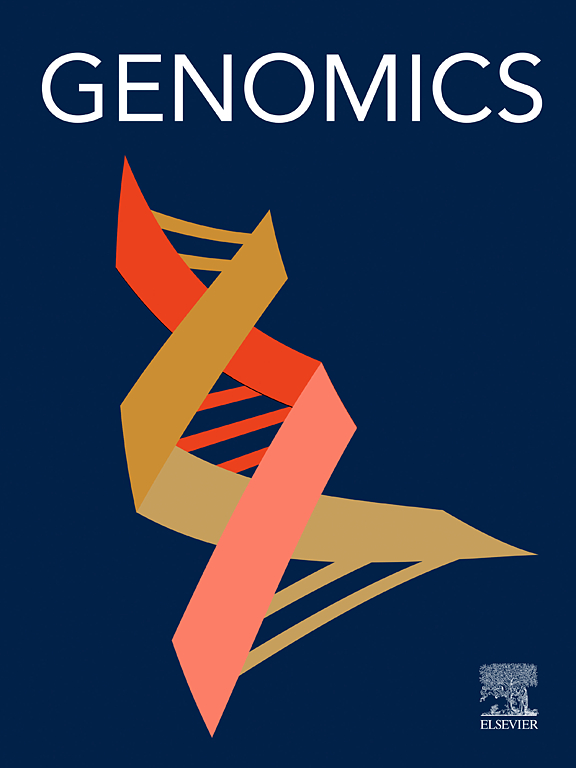基于FN1/PI3K/ akt介导的mtor非依赖性信号通路探索曲妥珠单抗诱导心肌细胞萎缩的作用机制。
IF 3
2区 生物学
Q2 BIOTECHNOLOGY & APPLIED MICROBIOLOGY
引用次数: 0
摘要
曲妥珠单抗(TRZ)是治疗her -2阳性乳腺癌的标准药物,但其心脏毒性严重影响患者预后,TRZ诱导心肌细胞萎缩导致心脏毒性的潜在机制尚不清楚。本研究旨在利用单细胞转录组测序(scRNA-seq)和生物信息学方法探讨trz诱导的心脏毒性的潜在靶点和信号通路。通过scRNA-seq和生物信息学分析,共鉴定出618个差异表达基因(deg)。基因本体(GO)分析、京都基因与基因组百科全书(KEGG)通路分析、Reactome分析、Wiki通路分析、蛋白-蛋白相互作用(PPI)网络分析和逆转录聚合酶链反应(RT-PCR)结果表明,免疫细胞源性FN1可能通过细胞外基质(ECM)机制激活心肌细胞中PI3K/ akt介导的mtor独立信号通路,在trz诱导的心脏毒性中发挥关键作用。Western blot分析显示,TRZ组大鼠FN1、p-PI3K/PI3K、p-AKT/AKT蛋白表达升高,p-mTOR/mTOR未升高,心肌细胞自噬水平升高,心肌萎缩和凋亡水平升高。透射电镜显示,TRZ处理的样品中自溶酶体增加,而免疫荧光分析显示,与con相比,TRZ组心肌损伤加重,心肌细胞明显萎缩。我们的研究结果表明,TRZ引发的免疫细胞释放FN1, FN1通过ECM触发心肌细胞中的非典型(mtor独立)PI3K/AKT信号。这种异常通路驱动过度自噬,启动从细胞萎缩到细胞凋亡的病理级联反应,最终表现为临床心脏毒性。本文章由计算机程序翻译,如有差异,请以英文原文为准。
Exploring the mechanism of action of trastuzumab-induced cardiomyocyte atrophy based on the FN1/PI3K/AKT-mediated mTOR-independent signaling pathway
Trastuzumab (TRZ) is a standard drug for the treatment of HER-2-positive breast cancer, but its cardiotoxicity seriously affects the prognosis of patients, and the potential mechanism of TRZ-induced cardiomyocyte atrophy leading to cardiotoxicity remains unclear. This study aimed to investigate the potential targets and signaling pathways of TRZ-induced cardiotoxicity using single-cell transcriptome sequencing (scRNA-seq) and bioinformatics methods. A total of 618 differentially expressed genes (DEGs) were identified through scRNA-seq and bioinformatics analysis. Gene Ontology (GO) analysis, Kyoto Encyclopedia of Genes and Genomes (KEGG) pathway analysis, Reactome analysis, Wiki pathway analysis, Protein-Protein Interaction (PPI) network analysis, and Reverse Transcription-Polymerase Chain Reaction (RT-PCR) results indicated that immune cell-derived FN1 may play a pivotal role in TRZ-induced cardiotoxicity by activating PI3K/AKT-mediated mTOR-independent signaling pathways in cardiomyocytes through extracellular matrix (ECM) mechanisms. Western blot analysis revealed that the expression of FN1, p-PI3K/PI3K, and p-AKT/AKT proteins was elevated in the TRZ group, no elevation of p-mTOR/mTOR and the autophagy level of cardiomyocytes was elevated, as well as the levels of myocardial atrophy and apoptosis were enhanced after treatment with TRZ. TEM revealed increased autolysosomes in TRZ-treated samples, while immunofluorescence analysis demonstrated exacerbated myocardial injury and significant cardiomyocyte atrophy in the TRZ group compared to CON. Our results demonstrate that TRZ-primed immune cells release FN1 which, through ECM triggers non-canonical (mTOR-independent) PI3K/AKT signaling in cardiomyocytes. This aberrant pathway drives excessive autophagy, initiating a pathological cascade from cellular atrophy to apoptotic death and ultimately manifesting as clinical cardiotoxicity.
求助全文
通过发布文献求助,成功后即可免费获取论文全文。
去求助
来源期刊

Genomics
生物-生物工程与应用微生物
CiteScore
9.60
自引率
2.30%
发文量
260
审稿时长
60 days
期刊介绍:
Genomics is a forum for describing the development of genome-scale technologies and their application to all areas of biological investigation.
As a journal that has evolved with the field that carries its name, Genomics focuses on the development and application of cutting-edge methods, addressing fundamental questions with potential interest to a wide audience. Our aim is to publish the highest quality research and to provide authors with rapid, fair and accurate review and publication of manuscripts falling within our scope.
 求助内容:
求助内容: 应助结果提醒方式:
应助结果提醒方式:


